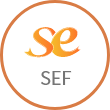27th Global Leaders Forum





27th Global Leaders Forum
27th Global Leaders Forum
My book, Korea Design Agenda 88, was written to find designical solutions to various social problems. This book covers five categories. Cultural champion, Korea, deals with how to take advantage of its cultural assets including its own language and longer than three thousand year history. Creative champion, Korea, searches for the way to link high national intelligence to creativity. Green champion, Korea, starts with the question of the feasibility of environmentally friendly and sustainable development. Universal Korea tries to answer the question whether building a country where every citizen is happy is possible. The last category, Jumping Korea, deals with the designical vision of unified Korea. Today, considering the limitation of time, I’ll talk about Cultural champion, Korea.
In the midst of the IMF financial crisis, Guy Sorman stated that the problem of Korea is not in its economy but in the fact that it does not have any representative cultural image. The national brand is a metaphorical symbol of a nation. The typical symbol of Korea is taegeuk. Some may respond to this idea believing that the taegeuk idea originated in China. However, the image of taeguk started in Korea. The design is found in the three-floor pagoda of Garmeunsaji in the 7thcentury,intheGoguryeo’s ancient tomb mural, Sa-sin-do, and even in rock and cave paintings. Taegeuk symbolizes the endless circulation of yin and yang and changeable property of nature.
The lack of national typography is the biggest reason for making urban scenery look messy. Qin Shi Huang pursued not only the unification of land but also the unification of culture and unified typography, which testifies his genius. In Europe, leading magazines still use the Blackletter font, which was designed in the Reformation period and Herbetica, which was designed by Switzerland to solidify multiethnic society, is a typical font for modernity. Hangul is a scientific and formatively beautiful character system. In contrast to Japanese characters, Hangul takes the shapes of Platonic geometric forms and has global universality.
Another area which needs attention is conserving traditional houses and developing reformed traditional houses. 15,500 traditional houses are said to remain in Seoul and we need to form a contextualized village as Tokyo does. For diplomatic offices, we should build traditional houses and Korean gardens. Traditional Korean clothes evoke sadness. Why did we make prisoner clothes similar to traditional clothes? From when did traditional clothes represent activist clothing? A man in Korean costume painted by Peter Rubens depicts a man sold to Italy after being kept as a captive during the Imjin Japanese invasion and shows the dignity and decency of the traditional costume.
When we start fine art education by drawing Agrippa, Julian, and Venus, it is inevitable that our vision is set western. The standard sculptures for the icons of patriotism such as Jung-gun Ahn, Sung-man Lee, Gu Kim, Bong-gil Yun should be made and distributed and fine art education should be started by drawing their figures. It’s time for us to build the collaborative network of diverse cultural sectors and drive the Han-ryu further.
Complied by Taewoo Doh, laywer
Translated by Soojung, Kang, writer



